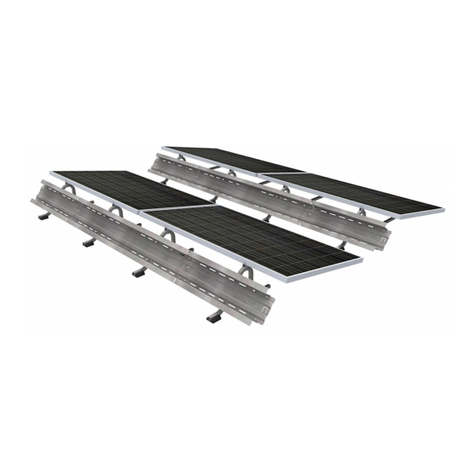
Polar Bear East/West 10 Degree Installation Manual
9910022 Rev A
6. Pick a starting corner on the North West end of the array and place Supports as shown below in
Figure 3. The first East West support should be laid out with the high end to the West and the
low end to the East
7. Each additional East West Supports will be laid out with the low end to the West and high end to
the East (Figure 4, Figure 5). PanelClaw recommends starting the array in a corner with low
complexity and moving outwards in a direction that best suits the individual array you are
building (e.g. rows and columns with the least number of interruptions/breaks).
Note: Supports without the optional integrated roof protection pad ensure that a proper roof
protection pad is installed. Center the pad under the Support such that the roof protection pad
extends beyond the edge of the Support by an equal amount on all sides (E-W and N-S).
8. Use the properly configured Spacer Stick - A (the longer stick) to position the Supports
apart in the North South direction. Place the notch in the Spacer Stick - A, over the low
end of the Support at the edge of the array and position the Support directly to the
North or South (depending on build direction) so that the notch at the other end of the
spacer stick fits over the low end of the adjacent Support.
9. The distance between Supports in the East/West direction is set using the Spacer Stick - F. The
3/8” studs in the Spacer Stick are placed in the proper Claw mounting hole of a Low Support and
an East West support to properly space out supports. This process can be continued to lay out
the remainder of the array. To determine the proper holes to use with the Spacer Stick on the
high and low end of the Support for this array, please refer to the Ballast Drawing
(typical examples shown in Figure 4,Figure 5 and Figure 6).
Figure 3 Support Positioning West Side





























